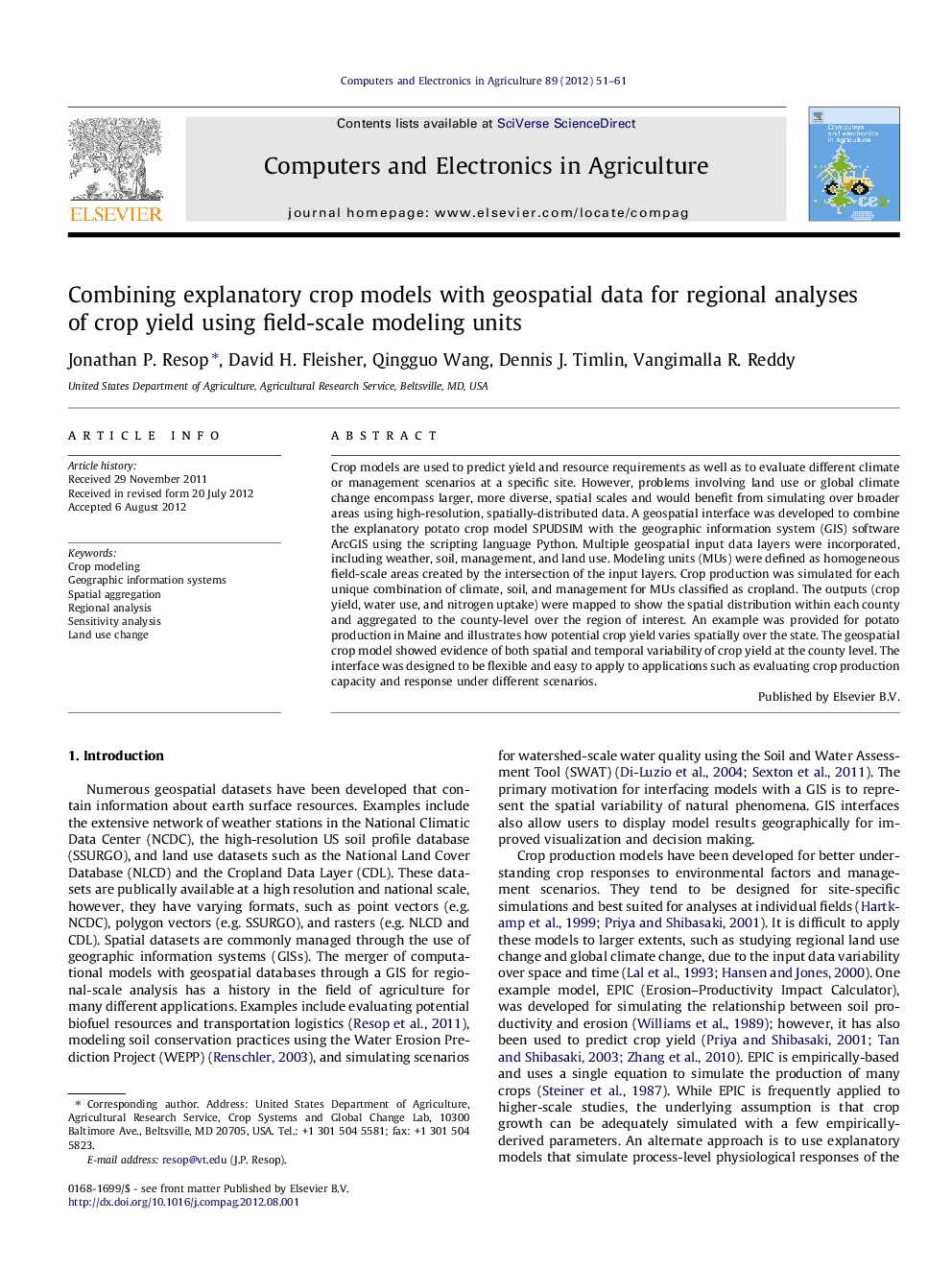| Article ID | Journal | Published Year | Pages | File Type |
|---|---|---|---|---|
| 84420 | Computers and Electronics in Agriculture | 2012 | 11 Pages |
Crop models are used to predict yield and resource requirements as well as to evaluate different climate or management scenarios at a specific site. However, problems involving land use or global climate change encompass larger, more diverse, spatial scales and would benefit from simulating over broader areas using high-resolution, spatially-distributed data. A geospatial interface was developed to combine the explanatory potato crop model SPUDSIM with the geographic information system (GIS) software ArcGIS using the scripting language Python. Multiple geospatial input data layers were incorporated, including weather, soil, management, and land use. Modeling units (MUs) were defined as homogeneous field-scale areas created by the intersection of the input layers. Crop production was simulated for each unique combination of climate, soil, and management for MUs classified as cropland. The outputs (crop yield, water use, and nitrogen uptake) were mapped to show the spatial distribution within each county and aggregated to the county-level over the region of interest. An example was provided for potato production in Maine and illustrates how potential crop yield varies spatially over the state. The geospatial crop model showed evidence of both spatial and temporal variability of crop yield at the county level. The interface was designed to be flexible and easy to apply to applications such as evaluating crop production capacity and response under different scenarios.
► A method was developed for combining crop models with geographic information systems using high-resolution datasets. ► Crop production was modeled at the field-scale and aggregated to the county-level. ► The geospatial crop model interface is flexible for different crops, areas, and applications. ► Potato production was mapped for Maine as an example. ► Predicted crop yield was evaluated with respect to both spatial and temporal input variability.
